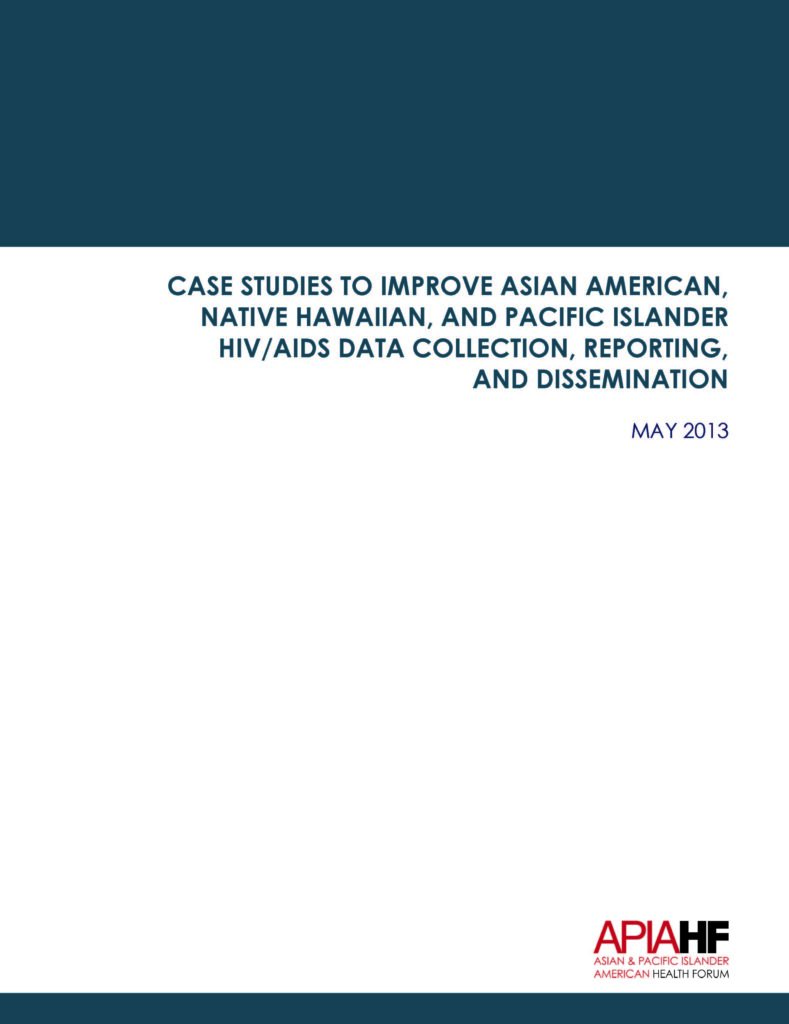Despite numerous national, state, and local efforts to improve HIV/AIDS surveillance and epidemiology, there continues to be significant gaps in the collection, reporting, and dissemination of HIV/AIDS data related to Asian American, Native Hawaiian, and Pacific Islander (AA and NHPI) populations. Several states continue to aggregate or “lump” AA and NHPI data into an “other” category. Few states provide disaggregated AA and NHPI data in their surveillance reports and epidemiologic profiles. Despite these gaps, there have been some health departments who have sought to address their own internal as well as their constituents’ data needs related to AA and NHPI
populations.
In 2011, the Asian & Pacific Islander American Health Forum (APIAHF) began a qualitative review of HIV/AIDS surveillance reports, epidemiologic profiles (epi-profiles), and other surveillance-related documents across 50 state health departments and several cities funded directly by the U.S. Centers for Disease Control and Prevention (CDC). Through this review, several jurisdictions were identified for further review to detail and document “promising” practices related to HIV/AIDS data collection, reporting, and dissemination for AA and NHPI populations.
This report includes in-depth case studies of three jurisdictions: New York, Hawaii, and San Francisco. All three represent jurisdictions with significant AA and NHPI populations and significant rates of HIV/AIDS in AA and NHPI populations. Each jurisdiction historically and/or currently demonstrates a level of responsiveness to increased needs for AA and NHPI HIV/AIDS data to inform planning and prevention service efforts. In developing these case studies, APIAHF also conducted multiple interviews with health department surveillance staff (current and former), health department leadership (e.g. Prevention Managers), community-based organization (CBO)
representatives, and other stakeholders.
This report also includes “bright ideas” or mini-case studies of practices implemented by jurisdictions across the U.S. These mini-case studies include states where there are emerging AA and NHPI communities and/or trends of increasing impact of HIV/AIDS on AA and NHPI communities. Similar to the in-depth case studies, these “bright ideas” were developed based on review of available documents as well as key informant interviews with health department staff.

